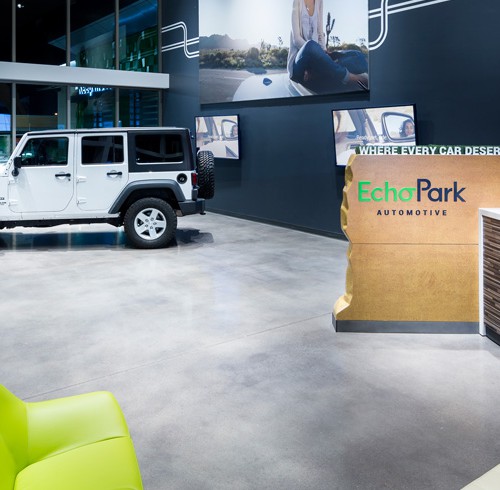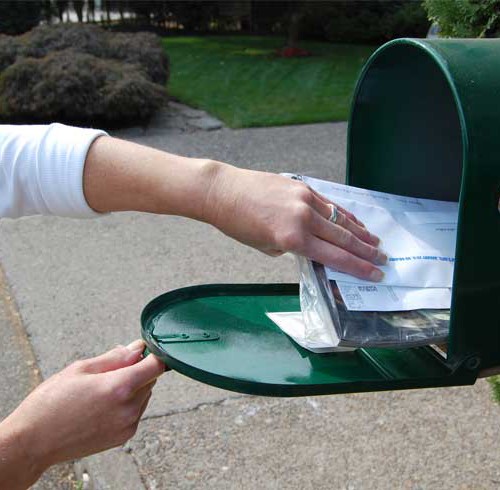How Dealers Can Leverage CRM To Create Process Driven Cultures: Top Experts Weigh In
Today’s automotive dealership ecosystem, over 15,000 car dealers strong, power their sales efforts with a customer relationship management (CRM) tool. Unfortunately, many of these dealers view this merely as a tool, rather than one of the most valuable solutions available to help improve their dealership’s performance.Â
The Gartner Group has stated more than $2 billion in software companies purchase isn’t being used. Additional research has indicated that less than 40% of companies has adoption rates above 90% – users are simply not engaging with their CRM solutions. Business owners continue to state they’re frustrated about the level of employee usage. Â Â
Let’s break down the concept of customer relationship management solutions and their intended purpose and benefits. Then we’ll contrast those ideas against the feedback from a few of the most respected CRM leaders in the industry. The goal: To help you see your CRM as something much bigger than a tool, think about how your CRM can improve your business and discover what it can do for your internal culture.Â
A CRM’s purpose is to help manage how your business interacts with the most important element – your existing and potential customers. Today’s best technology provide solutions to help coordinate the sales efforts. Today’s top design experts make it easy for you to organize and automate customer activities. CRM solutions also help you build efficient marketing while transforming customer service into more than an department and into a way of life for your brand. Dealerships with effective CRM solutions also tend to have solid leadership, helping contribute to an effective internal culture.Â
Do all dealerships have this same experience with their CRM solution? Of course not. We asked the CRM experts to share their insights about the problems facing dealers with regards to their CRM usage and how your CRM can create a more process driven culture inside your showrooms.
Chris Vitale, Vice President of Sales at iMagic Lab said it’s so apparent the software solutions aren’t being used properly. “Time and time again I see where the only clients added to their CRM have those who have been sold to, or those most likely to sell – and that’s it. Obviously this defeats the entire purpose of the CRM. I’ve seen managers try to tell me how their top salesperson has an 85% closing ratio. Religious figures didn’t even close at 85%!” If managers are letting this happen, the culture is destined to breakdown quickly.Â
James Maguire, Director of Product Management at ADP Dealer Services, is a staunch advocate of driving the basic activities and behaviors that many dealers fail to maintain. “One of the main problems I continue to see relates to staff members simply not creating consistent usage behaviors. Missing records, incomplete customer profiles and out of date work plans are all the result of inconsistent activity,” said James. Another major usage issue for dealers is the training aspect. there are plenty of excellent sources of training, whether it’s an in-house trainer, an industry consultant and via your CRM vendor. The bottom line is you need to leverage these resources to create the awareness needed and master the platform.”Â
James also added a tactical maneuver that dealers could use more often. He recommended integrating your phone system with the CRM solution for better efficiency and organization of the customer data.Â
Hunter Swift, Manager of Market Development at DealerSocket tells a similar tale of the myopic view dealers have on managing campaigns. “I’m puzzled why so many dealers still have just one prospect campaign in place. This single campaign enrolls every prospect who submits a lead, calls or visits the dealership. Dealers should be marketing to someone who has visited the dealership and has negotiated numbers different than someone who has submitted a lead but never visited. Prospect campaigns should not be designed to sell the car but to advance the customer through the sales process (Contact, Appointment, Visit, Demo, Write Up, Sold). The key to these custom, source and status driven campaigns is the 3 R’s. To send the Right Message to the Right Person at the Right Time.”
Hunter shared his experiences with other real world activities he’s seeing. “I recently heard at a trade show that only 25%-35% of customers who visit the dealership are logged into the CRM. If this is true there is a huge opportunity for improvement. Let looks at why this is happening: The salesperson either forgets the customers name, customer doesn’t come into office, or gives fake info. We need to track every up even unconverted ups.Â
This is why using a Mobile CRM is so crucial. Sales people should have the ability to enter customer info on the lot. In a recent DealerSocket study, we tracked six dealership for six months Three months without a Mobile CRM and three months with a Mobile CRM and we saw an increase of 33% more up captured. We also saw that not only were they capturing more customers, they also captured more info because possibly the customer didn’t think they were being entered into a system by a sales guy on the other side of a monitor.” This is culture changing activity and is also a giant step towards changing customers’ perceptions of the traditional buying experience.Â
Another major issue with dealers’ CRM usage is indicative of human psychology, says Alex Snyder Senior Director, Product Design at Dealer.com. We’re optimistic about the job we’re going to perform. We sign ourselves up for too much and our bosses do the same a lot of time. When it comes to CRM, this gives sales agents too many follow up tasks. A new CRM is installed and management sees it as an opportunity to change processes. Then, they get excited about the new capabilities the new CRM brings and human nature gets the best of them:  “Our people can handle this.” Roughly three months after the install sales agents hate the new CRM because they have a task load that is beyond their daily capabilities. This is actually the cancer of any CRM system.”Â
A common mantra in the retail automotive business is to “Build, manage and execute your processes.” Your CRM should be viewed as a cornerstone of this effort. Our CRM experts also weighed in on how your CRM should be helping you create a your process driven culture.
Hunter loves to talk about having an effective process culture and how the properly executed CRM contributes, he shares plenty of helpful gems when describing it: “By truly embracing CRM, any CRM, and shaping it around what your store and manufacturer expect and by brilliantly doing the basics because your tool reminds everybody to i.e. capturing two phone numbers (one should be mobile), an email address and annotating some common ground on each and every client you’ll soon see that these behaviors become second nature.”Â
He continued by adding, “By inspecting what you expect means not working numbers or discussing deals that aren’t in the tool and once a buyers order or worksheet is generated from the system checking it for two numbers, an address and an email address. This sort of reinforcement in sales excellence will force individuals to learn to be better. By shaping process and utilizing CRM to efficiently make your team more effective you’re not only creating a higher caliber sales associate but also generating the intended outcome as a byproduct: More Sales.
Sales to Service hand off is another great example. By honestly checking the box that says “yes” or “no” when accomplishing this, your system will know what to do next. For CSI’s sake it’s critical! Does that email from the Service Manager need to automatically fire, does that phone call to “introduce” your customer to a service staff member need to be queued for an advisor the following day, etc. Adherence to process and repetition breeds confidence. I’m the first to admit no two deals are alike and sales is a fluid business but hammering out the basics like it’s second nature and actually being good at them will make the job more enjoyable and fulfilling for both the sales associate and the customer.”Â
Chris keeps it succinct and sticking with the core element of relationship management.  “The first tools dealer used for CRM were really tools to manage Internet Leads (ILM). This has transitioned to CRMs to help dealers manage Customers. We are seeing that progressive dealers are using CRM technology now to manage the Relationship. This helps dealerships stand out by caring for their needs based on time, response type, and relevant content, creating a positive experience and creates a customer for life.”
Alex breaks the CRM solution down even further and sees it as functioning as a way of measuring things different than traditional methods. “The dealer should focus his CRM efforts around a single goal that isn’t “sell more cars.” I recommend that dealers use their CRM to focus their people on setting more appointments. And once that goal is achieved, then they can focus on managers confirming those appointments. And once that is achieved they can focus on raising their appointment shown numbers. Â
The dealership’s process culture will thrive when the environment fosters the basic mechanics. “The leadership team must encourage consistent coaching, timely reporting and day-today involvement with the team,” added James.Â
When there is an attainable goal set, people will rally to hitting it. If setting more appointments is that goal, then the people setting up the process plans know what they should be gearing those follow-up tasks towards and the people doing those tasks know what to do when speaking with the customer. Â Have a vision, then set goals to achieve it and everything falls in line.” Â
Pay attention to the guidance provided by the experts and find the opportunities for improvement in your dealership. Take a good look at your dealership CRM usage levels, your staff’s consistency and let the software help drive your culture. Doing so can be the difference between a dealership playing not to lose and a dealership positioned to thrive in any market.Â












Warning: count(): Parameter must be an array or an object that implements Countable in /home/pg4b1yzvrqqo/domains/test.drivingsalesnews.com/html/wp-includes/class-wp-comment-query.php on line 399